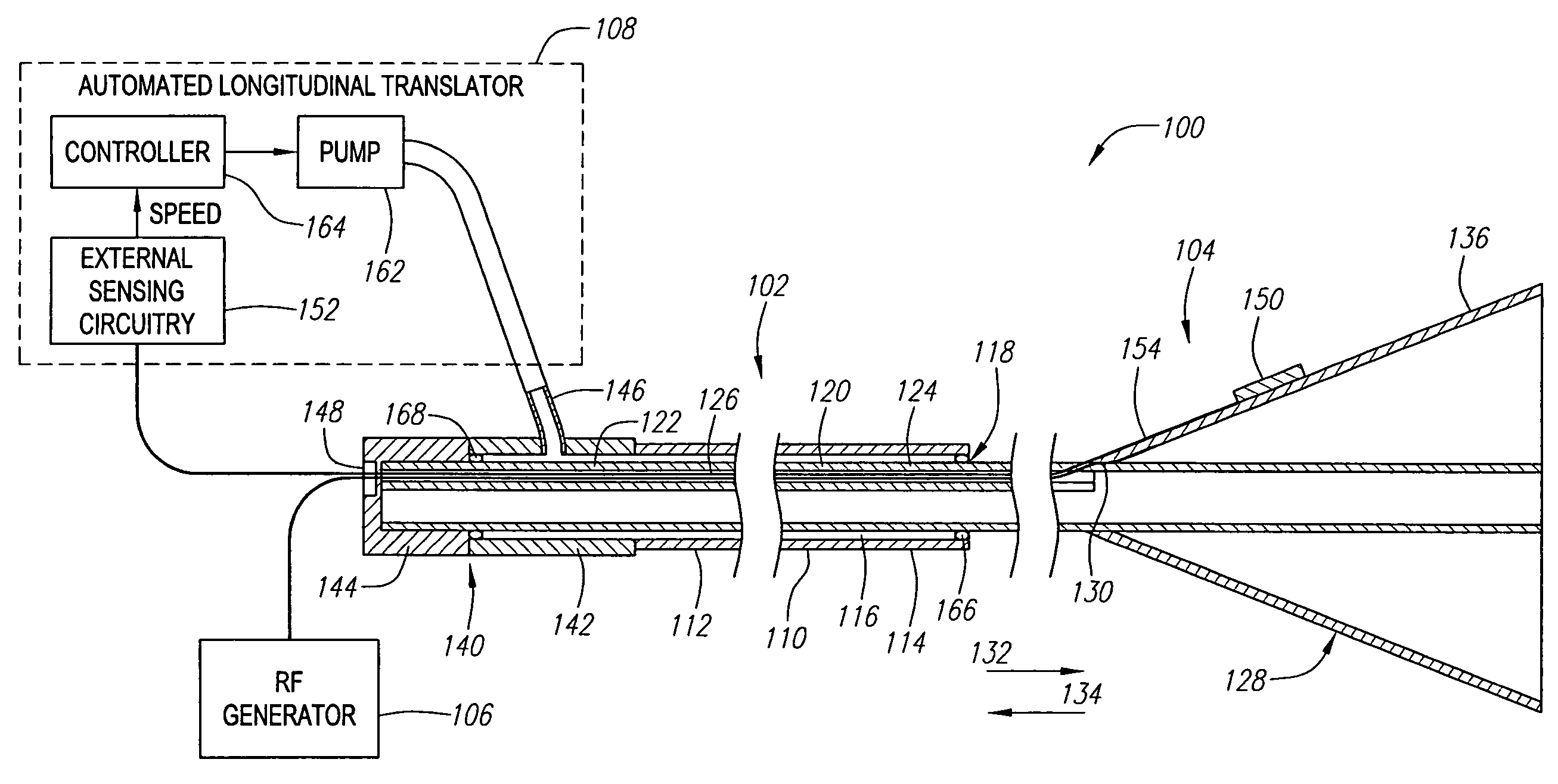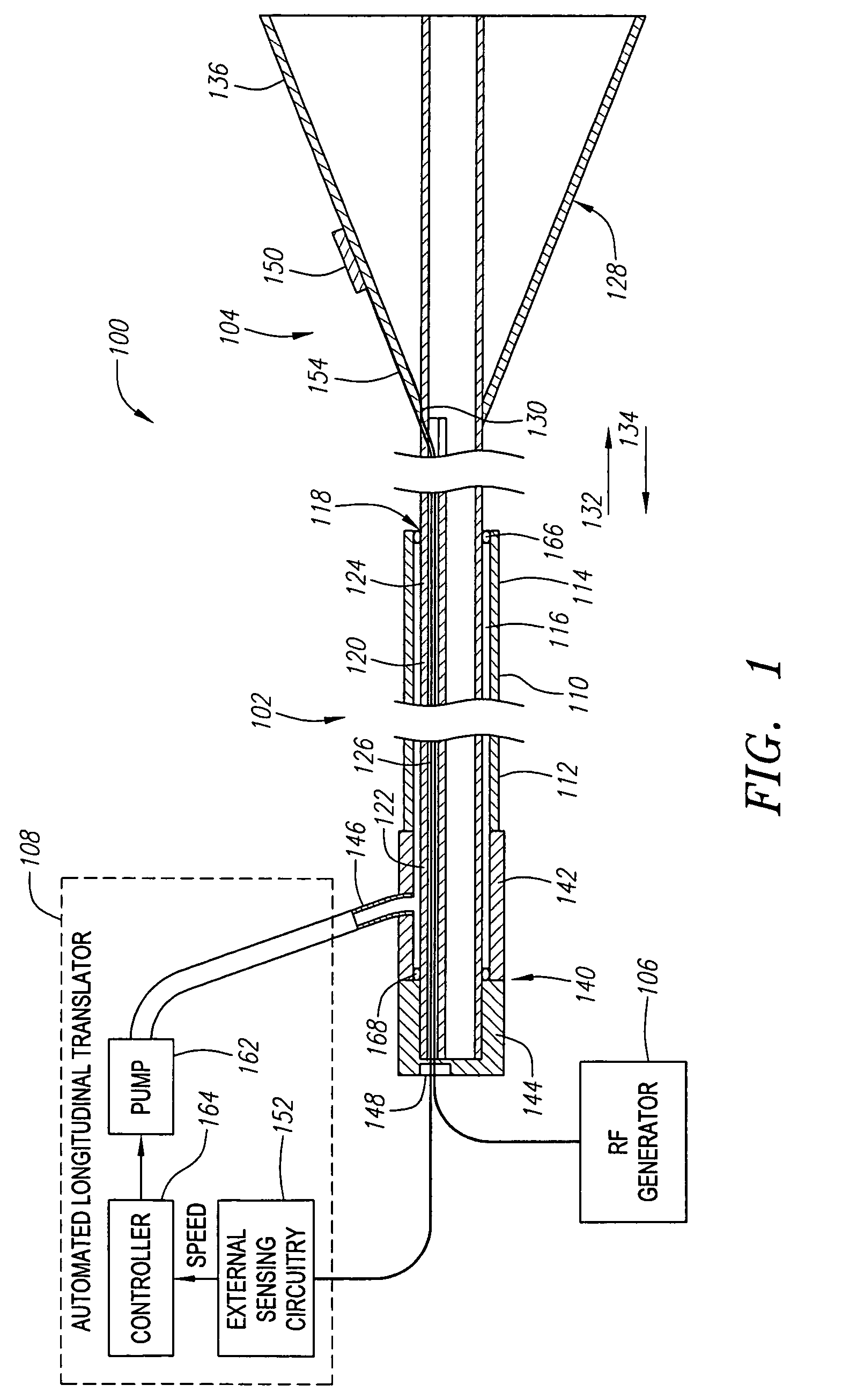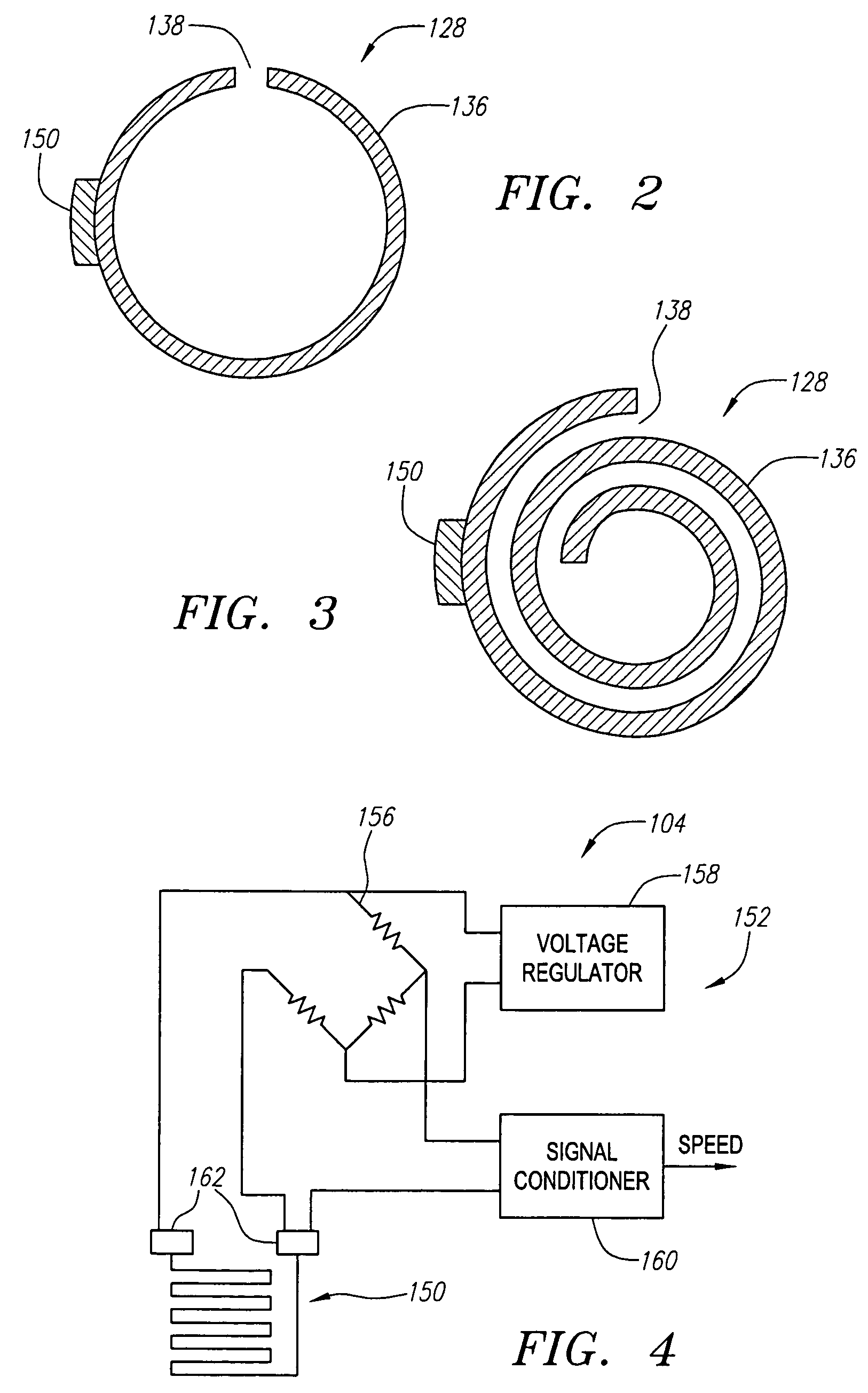Endovenous ablation mechanism with feedback control
a feedback control and ablation mechanism technology, applied in the field of body lumen selective occlusion methods and devices, can solve the problems of prone to complications in venous ablation methods, reduced vessel occlusion, and endothelial searing without optimal vein-wall contraction
- Summary
- Abstract
- Description
- Claims
- Application Information
AI Technical Summary
Benefits of technology
Problems solved by technology
Method used
Image
Examples
Embodiment Construction
[0034]FIG. 1 illustrates a vessel occlusion system 100 constructed in accordance with a preferred embodiment of the present inventions. The vessel occlusion system 100 generally comprises a vessel occlusion catheter assembly 102, a sensor assembly 104, a radio frequency (RF) generator 106, and an automated longitudinal translator 108.
[0035]The catheter assembly 102 generally comprises an elongated outer catheter sheath 110 having a proximal end 112, a distal end 114, and a central lumen 116 extending through the catheter sheath 110 between the proximal end 112 and an axial opening 118 located at the distal end 114. The catheter sheath 110 has a suitable length, typically in the range from 40 cm to 200 cm, usually from 75 cm to 120 cm. The catheter sheath 110 has an outside diameter consistent with its intended use, typically being from 1 mm to 5 mm, usually from 2 mm to 4 mm. The catheter sheath 110 includes means for introducing the sheath 110 over a movable guide wire 180 (shown i...
PUM
 Login to View More
Login to View More Abstract
Description
Claims
Application Information
 Login to View More
Login to View More - R&D
- Intellectual Property
- Life Sciences
- Materials
- Tech Scout
- Unparalleled Data Quality
- Higher Quality Content
- 60% Fewer Hallucinations
Browse by: Latest US Patents, China's latest patents, Technical Efficacy Thesaurus, Application Domain, Technology Topic, Popular Technical Reports.
© 2025 PatSnap. All rights reserved.Legal|Privacy policy|Modern Slavery Act Transparency Statement|Sitemap|About US| Contact US: help@patsnap.com



